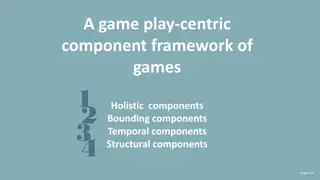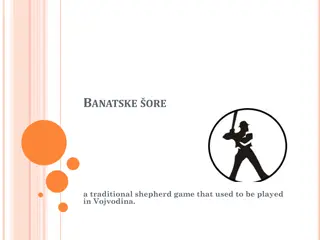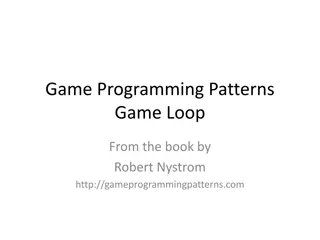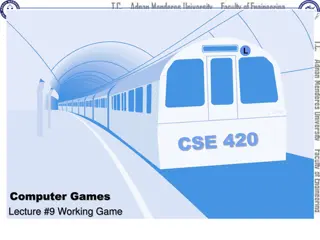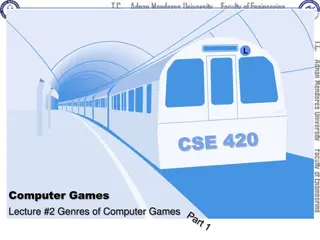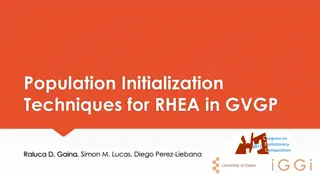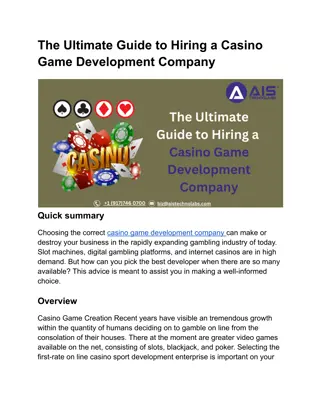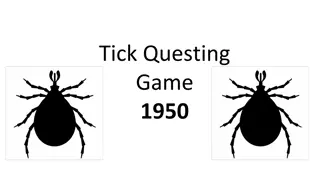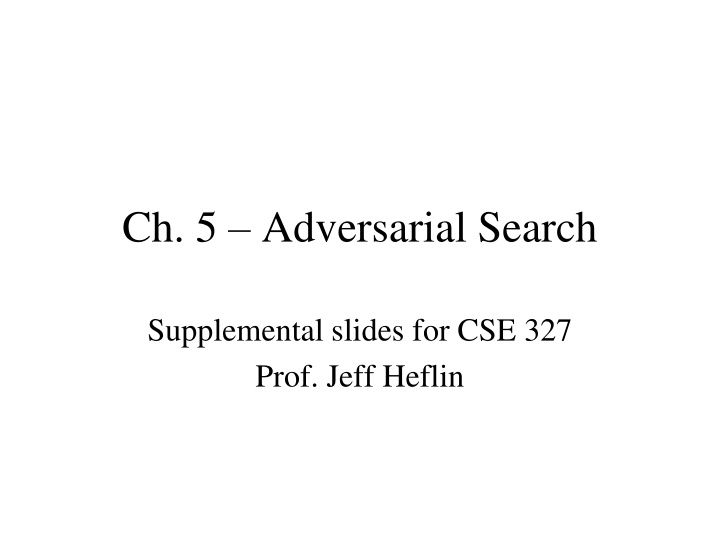
Adversarial Search and Minimax Algorithm Overview
Explore supplemental slides covering adversarial search in CSE 327 with Prof. Jeff Heflin, including Tic-Tac-Toe transition models, the Minimax Algorithm, utility-based agents, and Minimax with cutoff limits. Understand how these concepts are used in decision-making processes for game-playing agents.
Download Presentation

Please find below an Image/Link to download the presentation.
The content on the website is provided AS IS for your information and personal use only. It may not be sold, licensed, or shared on other websites without obtaining consent from the author. If you encounter any issues during the download, it is possible that the publisher has removed the file from their server.
You are allowed to download the files provided on this website for personal or commercial use, subject to the condition that they are used lawfully. All files are the property of their respective owners.
The content on the website is provided AS IS for your information and personal use only. It may not be sold, licensed, or shared on other websites without obtaining consent from the author.
E N D
Presentation Transcript
Ch. 5 Adversarial Search Supplemental slides for CSE 327 Prof. Jeff Heflin
Tic-Tac-Toe Transition Model X X O O X O to bottom-center O to top-left O to top-center O to top-right O O O X X O X X O X X O X X O O O X O X O X O X
Minimax Algorithm function MINIMAX-DECISION(state) returns an action return arg maxa ACTIONS(s) MIN-VALUE(RESULT(state,a)) function MAX-VALUE(state) returns a utility value if TERMINAL-TEST(state) then return UTILITY(state) v - for each ain ACTIONS(state) do v MAX(v, MIN-VALUE(RESULT (s,a))) return v function MIN-VALUE(state) returns a utility value if TERMINAL-TEST(state) then return UTILITY(state) v + for each a in ACTIONS(state) do v MIN(v, MAX-VALUE(RESULT (s,a))) return v From Figure 5.3, p. 166
Utility-Based Agent sensors State What the world is like now How the world evolves What it will be like if I do action A Environment What my actions do How happy will I be in such a state Utility What action I should do now Agent actuators
Minimax with Cutoff Limit function MINIMAX-DECISION(state) returns an action return arg maxa ACTIONS(s) MIN-VALUE(RESULT(state,a),0) function MAX-VALUE(state,depth) returns a utility value if CUTOFF-TESt(state,depth) then return EVAL(state) v - for each ain ACTIONS(state) do v MAX(v, MIN-VALUE(RESULT(s,a)), depth+1) return v function MIN-VALUE(state,depth) returns a utility value if CUTOFF-TESt(state,depth) then return EVAL(state) v + for each a in ACTIONS(state) do v MIN(v, MAX-VALUE(RESULT(s,a)), depth+1) return v


